
Astronauts are constantly present on the International Space Station all year round. Recently, Oleg Novitsky and Pyotr Dubrov were dispatched from Russia to orbit the Earth. They departed from the planet a couple of months ago and are scheduled for a significant spacewalk on June 2.
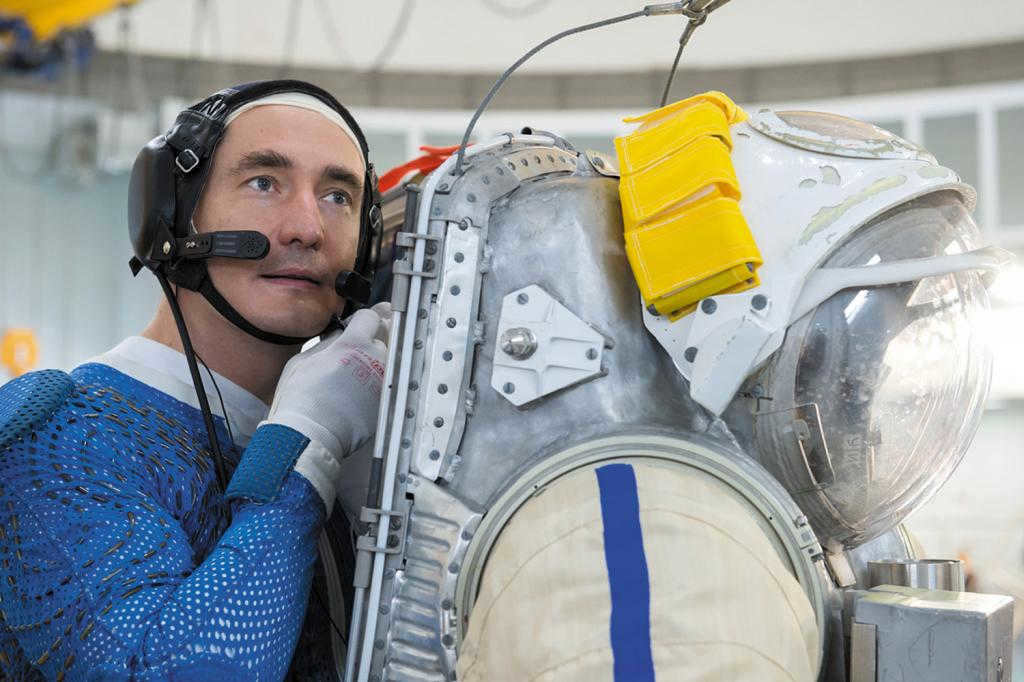
At 8:40 Moscow time, the Russian astronauts will venture into the vastness of outer space to carry out essential maintenance tasks on the space station. This crucial mission is expected to take approximately 7 hours. The specific details of the tasks they will undertake will be explained in the following section.
An Extensive Spacewalk
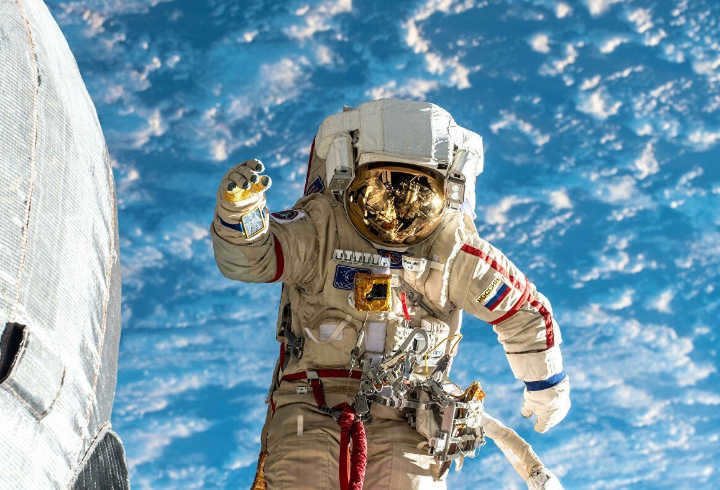
Russian cosmonauts are currently tasked with a number of crucial assignments. Some of the key tasks include:
- Replacing the water flow regulation panel.
- Installing equipment for conducting space exploration.
- Connecting antennas on the transition compartment responsible for docking spacecraft with the ISS.
These tasks are of utmost importance as they are necessary for the successful launch of the versatile research module “Nauka”. This module is designed to accommodate both internal and external equipment, enabling it to carry out a wide range of tasks.
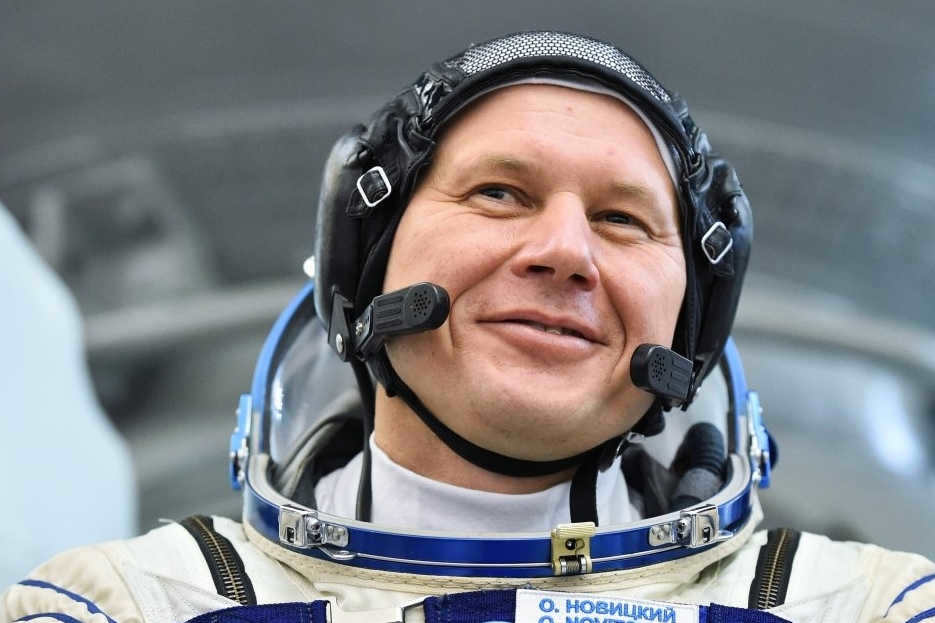
According to experts, this system is completely automated with the primary goal of minimizing the need for astronauts to conduct spacewalks for various tasks. Once the module is operational, the majority of these tasks can be completed directly from the space station. However, approximately ten trips will still be required by the astronauts to enable this functionality.
Currently, the Nauka module is in the final stage of factory testing. Additionally, the European Robotic Arm is being connected and activated to facilitate maintenance, distribute target loads, remotely control astronaut movement during spacewalks, and monitor the external surface of the ISS.
Summary
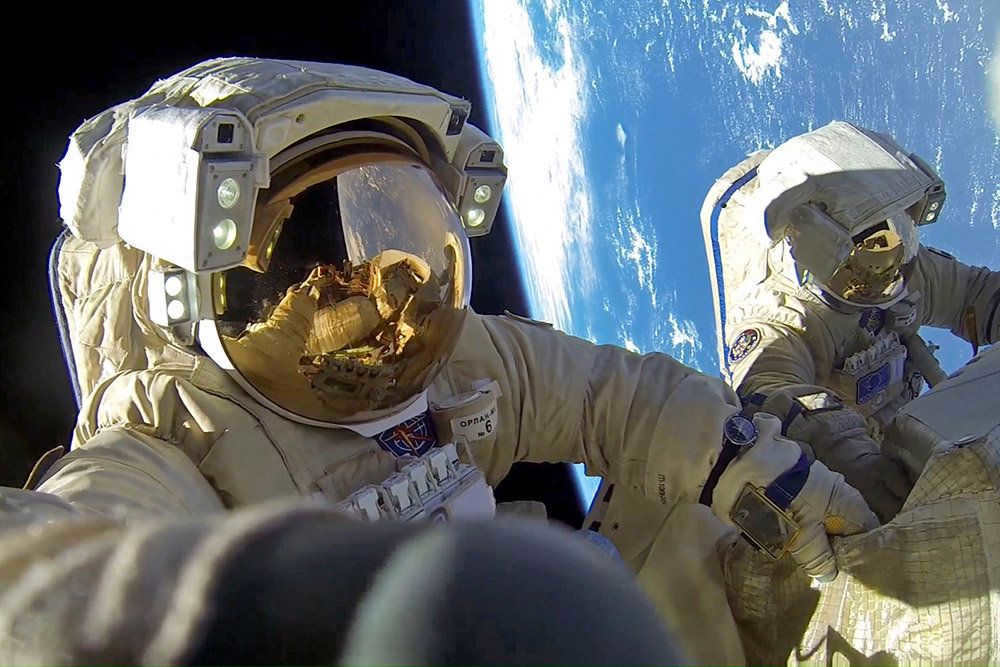
The upcoming spacewalk by Oleg Novitsky and Petr Dubrov is set to be one of the most extensive in recent memory. The reason behind its length is the extensive list of tasks they need to complete in order to ensure the timely launch of the Nauka module. However, the Russian cosmonauts are well-prepared and have a wealth of experience, so their success is highly anticipated. We can only wait for further updates to get a comprehensive understanding of the situation.
Who are the current Russian cosmonauts in space?
Which astronauts are currently in space in 2021?
What are the roles and responsibilities of the Russian cosmonauts currently in orbit in 2021? Who is scheduled to be the next crew member and what are the plans for long-term space expeditions to the ISS?
Despite facing some funding challenges and even recent accidents, the work in space continues and Russian astronauts persist in their missions, upholding Russia’s global standing and contributing to the progress of the world.
Since October 5th, a team consisting of cosmonaut Anton Shkaplerov, actress Yulia Peresild, and filmmaker Klim Shipenko has successfully reached the International Space Station (ISS).
They have joined the group of cosmonauts who have been present on the station since April 17th.
Unlike previous flights, this time the majority of astronauts sent to the international station are experienced individuals of mature age, as opposed to young specialists.
Currently, the primary active crew on board is comprised of seven members from the ISS-64/65 mission.
Those scheduled to fly to the ISS soon include: Raja Chari, Thomas Marshburn, and Matthias Maurer, who are preparing to arrive on October 17th.
Biographies of Russians currently on board the ISS
Oleg Novitsky
Peter Dubrov
Photos and biographies of Russians who have previously been in space
Nowadays, it is easier to become a cosmonaut than it was before, but only a lucky few get the opportunity. Each year, there are no more than 10-15 individuals in orbit, with Russia contributing 5-6 people. It is worth noting that not only former pilots, but also individuals from various fields are now being selected for space missions. In recent years, the following Russian cosmonauts have successfully completed their work in space:
Ivan Wagner was born on July 10, 1985. He graduated from the St. Petersburg Faculty of Aircraft Engineering at the Baltic State University named after Ustinov “Voenmech”. Prior to becoming a cosmonaut, he worked as an engineer in the Management Group at RSC Energia.
Oleg Skripochka was born in 1969 and graduated from Bauman Moscow State Technical University. He started his career at NPO Energia as a mechanic and later joined the squadron of test cosmonauts in 1997. This is his third time venturing into space.
Oleg Artemyev is an experienced specialist and commander, born in 1970. He is currently on his second mission in orbit. Born in Riga to a military engineer, he developed a passion for aviation from a young age and also excelled in sports, particularly wrestling. He obtained his education from Bauman University and the Academy of State Service. In 1998, he began working at RSC Energia, where he prepared crews for spaceflights. In 2003, he himself became a cosmonaut.
Anton Shkaplerov, born in 1972, has taken part in three space expeditions. He completed his education at the Higher Aviation School in Kachinsk in 1994, the Zhukovsky Military Academy in 1998, and the Academy of Civil Service in 2018. Initially, Shkaplerov served as a pilot-instructor for the Air Hussars aerobatics group before transitioning to the space unit in the early 2000s.
An interesting fact is that both of the most recent pilots graduated from the Academy of State Service under the President of the Russian Federation with a humanitarian specialty as an additional education. It is possible that having a third non-technical specialty is an unspoken requirement, or perhaps they underwent specialized training at this academy, potentially involving the participation of special services.
What is the nature of the work carried out by astronauts in space?
In the recent 64/65 expedition, the primary objective for astronauts is to install the equipment that was delivered with the latest cargo shipment. The International Space Station (ISS) is continually evolving and expanding, so there will be numerous “repairs” conducted in space over the upcoming months.
Russian and American astronauts aboard the ISS engage in activities such as docking new modules, collecting samples from the spacecraft’s exterior panels, and conducting biological and physical experiments. The flight programs are established well in advance of launch, with the astronauts tasked with enhancing safety and testing new technologies at high altitudes.
During the 64/65 expedition in 2021-2022, the following list of experiments and scientific fields is planned:
Exploration of physical and chemical interactions, testing of materials and environments under space conditions.
Exploring the Earth and the Galaxy is an intriguing endeavor that captivates the human imagination. The vastness of open space provides endless opportunities for scientific research and discovery.
One area of study that has gained significant attention is bioengineering, biotechnology, and plant science. Scientists are constantly striving to find innovative ways to enhance our understanding of life on Earth and potentially find solutions to global challenges.
Space exploration and observation are crucial for expanding our knowledge of the universe. Through advanced telescopes and space probes, we are able to gather valuable data about distant planets, stars, and galaxies.
Education and research play a vital role in pushing the boundaries of human knowledge. Universities and scientific institutions around the world collaborate to train the next generation of astronauts and scientists.
American astronauts, undoubtedly, often achieve remarkable milestones in space exploration, thanks to their larger crews and budgets. However, it is important to acknowledge the significant contributions of Russian astronauts who undertake some of the most challenging tasks in outer space.
The arrival of the Soyuz spacecraft’s descent vehicle, carrying three cosmonauts, was eagerly awaited on Earth. Russian cosmonaut Oleg Skripochka and American astronauts Andrew Morgan and Jessica Meir had spent over six months living and working on the International Space Station (ISS), but it was time for their return.
Before their departure, the team bid farewell to their fellow crew members, Anatoly Ivanishin, Ivan Wagner, and astronaut Chris Cassidy, who would remain on the station. After the emotional goodbyes, the Soyuz spacecraft undocked and began its descent back to Earth. The capsule faced intense atmospheric pressure during re-entry, with the cosmonauts experiencing up to 4g of force. However, their rigorous training and preparation helped them successfully withstand these challenging conditions.
And what they were not expecting was that the world would undergo a transformation. The team was greeted exclusively by individuals who had been tested for COVID-19. The search and rescue team members wore gloves and masks. The astronauts will be cared for by doctors during their next period of time. The Americans are en route to the United States, while Skripochka is in Star City.
The moment the vehicle touches down is the moment when the crew’s accomplishment is complete and they can finally rest – unlike the search and rescue team members, who are just getting started. In a matter of minutes, they must execute everything they have prepared for in countless training sessions. They must quickly locate the team and swiftly evacuate. They have airplanes, helicopters, and the most unconventional means of transportation at their disposal – the “Blue Bird” all-terrain vehicles.
However, the focal point in this situation is the individuals. The capsule, which has the ability to descend from the sky to the planet, was tested by a correspondent from Channel One.
The initial step that the rescuers take upon discovering the capsule is simply knocking on the window. Nevertheless, it is truly challenging for the astronauts to exit the descent vehicle on their own! It is a tight squeeze inside. It is imperative to have medical professionals and rescuers present.
Currently, the rescue capsule has been successfully positioned in an upright position. This time, it made a sideways landing, which is still considered normal and even preferable, according to the rescue team. The sideways landing facilitates the evacuation process for the crew members who have spent 205 days in space and have adapted to the Earth’s gravity. Once they are safely extracted from orbit – yes, extracted is the appropriate term – they are immediately transferred to a specially designated tent. Access to this tent is strictly prohibited for journalists and even higher-ranking officials, especially considering the ongoing coronavirus pandemic.
“It is crucial that they are not exposed to any infections upon returning to Earth. Therefore, in compliance with the guidelines set by the Federal Medical and Biological Agency of Russia, all necessary procedures are conducted while wearing masks,” explains Nikolai Makhov, an expert physician from the Federal Medical and Biological Agency.
This time, there are even stricter measures in place. Before heading to the Kazakh steppe, which is 147 kilometers away from Dzhezkazgan, all employees of Roscosmos, the Cosmonaut Training Center, rescuers, and doctors are not only required to wear masks but also undergo mandatory coronavirus testing.
“We are currently in the Kyzyl-Orda region in Kazakhstan, which has been heavily affected by the coronavirus. It was quite a complicated process for the Americans to come here, as Kazakhstan has closed its borders. They had to make arrangements through the U.S. Embassy and we prepared two resuscitation vehicles from the Russian FMBA. According to the plan, we and the Americans have to travel almost 300 versts to reach Kyzyl-Orda, where NASA air transport is waiting,” says Vyacheslav Rogozhnikov, the deputy head of the FMBA.
This unique aircraft immediately charted a course for the United States, and our Oleg Skripochka, the commander of the returning crew, quietly made his way to Baikonur. It was a tried and tested route. Starting with a special evacuation vehicle, which the rescuers fondly referred to as the “Blue Bird”.
Nikolai had already picked up Oleg Skripochka. We had a conversation with him even before touchdown. And, of course, we were curious about how the vehicle is disinfected in these coronavirus times. It turned out that the Bluebird is thoroughly disinfected before every meeting with those returning from space. Not just during a pandemic.
“The protocols are very strict. They completely treat the interior with alcohol,” says driver Nikolai Geneberg.
Our astronauts Anatoly Ivanishin and Ivan Wagner, along with NASA astronaut Chris Cassidy, who arrived a week ago, are currently still in orbit.
Due to the ongoing pandemic, all of them had to undergo a strict quarantine for nearly two months prior to the flight, effectively limiting their contact with other individuals. Even the customary ceremony of laying flowers at the monument to Yuri Gagarin in Star City was conducted at a distance from the backup crew. These measures were taken in order to prevent the transmission of the coronavirus to the International Space Station.
Arrival of the New Russian Crew at the ISS Aboard the Gagarin Spacecraft
In anticipation of the 60th anniversary of human space flight, a fresh international crew comprising of two Russian cosmonauts, Oleg Novitsky and Pyotr Dubnov, alongside American astronaut Mark Vande Hai, successfully reached the International Space Station (ISS). This remarkable journey was made possible by the spacecraft named after Yuri Gagarin, the first cosmonaut who ventured into space from our planet Earth.
What are some interesting facts about the new space mission?
The new space mission is dedicated to the first human to journey into outer space, Yuri Gagarin. To honor him, his portrait has been placed on the rocket’s fairing.
This mission stands out from previous ones in a few ways:
One notable difference is that the launch of the spacecraft was broadcasted live. Additionally, after a successful docking, Dmitry Rogozin, the head of Roscosmos, personally congratulated the crew on their arrival at the space station.
Commander Oleg Novitsky, who has previously spent over a year in orbit, is leading this mission. American astronaut Mark VandeHay is joining him for his second flight, while flight engineer Pyotr Dubnov is embarking on his first journey into space. Dubnov, a programmer, underwent a rigorous selection process and years of ground training to prepare for this mission.
As a result of the COVID-19 pandemic, there have been modifications to the pre-launch preparation procedures. Previously, astronauts would have their hair cut by a professional barber prior to the mission. However, this time, the backup crew members took on the responsibility of cutting their colleagues’ hair.
Another unique aspect of this mission was the inclusion of a kitten named Gav in the crew. This toy mascot was a gift from the commander’s daughter. Once the cosmonauts arrived at the space station, they had the opportunity to communicate with their loved ones, which was broadcasted on Russian television.
What is the daily routine of the crew aboard the International Space Station?
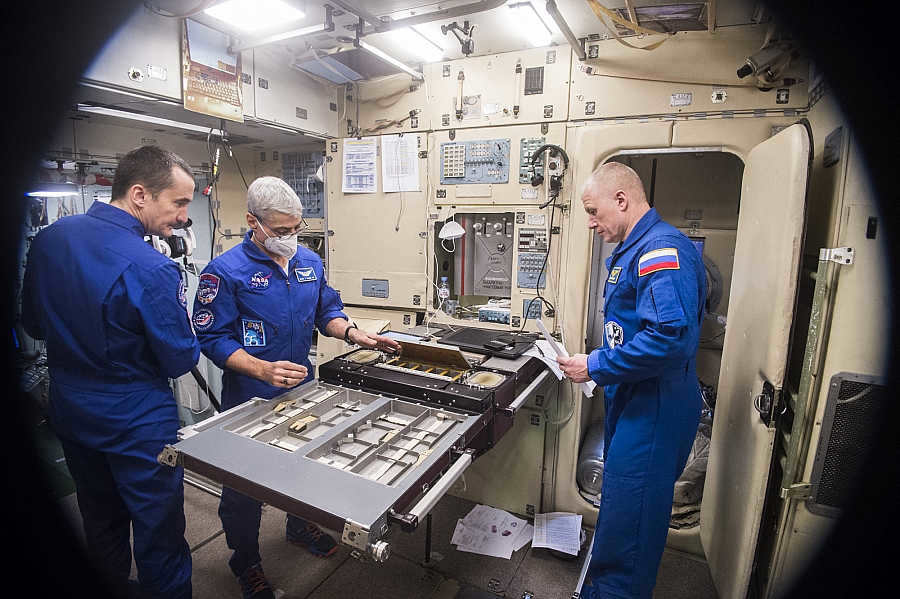
Following a brief period of adapting to the conditions on the space station, the astronauts have a multitude of tasks to accomplish:
The team aboard the Soyuz MS-19 spacecraft has successfully transferred to the International Space Station
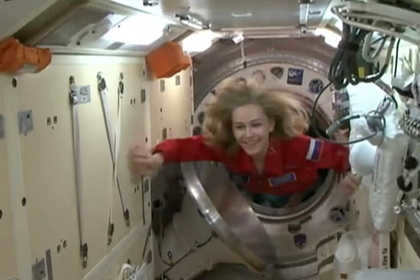
According to TASS, the team aboard the spacecraft “Soyuz MS-19” has successfully transferred to the International Space Station (ISS) to begin production of the film “Challenge”. Greeted by station commander Thomas Peske, the crew includes cosmonauts Oleg Novitsky and Pyotr Dubrov, as well as Japanese astronaut Akihiko Hoshide and American astronauts Mark Vande High, Shane Kimbrough, and Megan McArthur.
Resources related to the subject

Everything will be elevated.

The “Buran” disturbance.
A live stream documenting their journey was uploaded to the YouTube channel “Roscosmos”.
Manual Docking
The spacecraft was launched to the space station aboard a Soyuz-2.1a rocket at 11:55 am Moscow time from the Baikonur Cosmodrome. The flight followed a brief two-phase plan. During the docking procedure, the automatic rendezvous system’s “Kurs” equipment experienced two consecutive failures. As a result, the Mission Control Center instructed ship commander Anton Shkaplerov to switch to manual control. According to reports, cosmonaut Shkaplerov received assistance from actress Yulia Peresild and director Klim Shipenko. “They provided assistance and utilized the tablets I provided,” Shkaplerov disclosed.
According to Dmitry Rogozin, the CEO of Roscosmos, the decision to switch to manual control was made due to a malfunction on the ISS and a desire to avoid any potential risks. Rogozin also emphasized that the incident was not uncommon.
Related Articles

Genuine ROSS.

Space exploration milestone
Stellar composition
The primary crew consisted of Anton Shkaplerov, a cosmonaut from Roscosmos, director Klim Shipenko, and actress Yulia Peresild. All the chosen candidates have undergone extensive training as participants of a space mission, which lasted for several months. Peresild and Shipenko are expected to spend 12 days on the International Space Station (ISS), where they will shoot scenes for the movie “Challenge”. Russian cosmonauts, who will portray representatives of their profession in the movie, will assist them. Subsequently, Peresild and Shipenko will return to Earth on the Soyuz MS-18 spacecraft, along with cosmonaut Oleg Novitsky. This groundbreaking endeavor will mark the first feature film ever shot in space.
Prior to the departure of the film crew to outer space, pop star Alla Pugacheva expressed her support for Peresild by sharing a post on Instagram. “My dear Yulechka, you have been diligently preparing for this moment. And if you persist and persevere, you will undoubtedly achieve success. All you need to do is spread your wings and soar beyond your previous self,” the singer penned.
Borscht with caviar and cocoa
As per Alexander Agureev, the head of the nutrition department at the Institute of Medical and Biological Problems of the Russian Academy of Sciences, the actress and director will be consuming the same meals as the rest of the crew members during their time on the International Space Station (ISS). The expert explained that the astronauts have three main meals throughout the day, with light snacks in between.
For instance, on their first day at the station, the crew enjoyed a lunch consisting of homemade caviar, borscht with meat, azu, “Borodinsky” bread, and a dessert made of apples. Moreover, the Soyuz MS-19 spacecraft delivered fresh fruits and vegetables such as oranges, apples, and tomatoes to the ISS. As for beverages, the station offers coffee, tea, and cocoa.
“Lips were adorned, but their undergarments remained unchanged…” Public outcry over artists’ journey to space
As previously reported by Novye Izvestia, on the previous Tuesday, a Soyuz MS-19 spacecraft lifted off from the Baikonur Cosmodrome, carrying a film crew for the groundbreaking task of shooting a feature film beyond the confines of Earth. Director Klim Shipenko, actress Yulia Peresild, and cosmonaut Anton Shkaplerov embarked on a journey to the International Space Station (ISS) in order to capture footage for the film titled “Challenge”. This news has sparked widespread discussion in both traditional media outlets and online social networks.
Many critics rightly argue that filming in space will have no bearing on the overall “realism” of the forthcoming movie:
“The greatest movies about space have been filmed in studios with the aid of CGI, and this does not diminish their importance. The public’s fascination with space is driven solely by groundbreaking journeys into the unknown, something that Roscosmos has not been able to achieve in either manned or robotic space exploration for quite some time. Therefore, cutting back on manned missions in order to make a movie could actually have the opposite effect, which our adversaries would surely exploit…”
According to the web edition Readovka, the price tag for shooting the movie “Challenge” with Julia Peresild on the International Space Station (ISS) will be 2 billion rubles. However, the issue at hand is not just the astronomical cost of the First Channel’s project, but also the fact that it has disrupted the schedule of professional cosmonauts who were originally supposed to be working on the ISS.
Alexander Lazutkin, a Hero of Russia and pilot-cosmonaut, expressed his mixed feelings about this flight: “On a purely human level, I feel a great deal of sympathy for those individuals – our professionals – who were initially supposed to fly and carry out their work. These are people who were ready for the launch and were so close to it. They had been scheduled for the flight, but it was taken away from them.”
It is commendable that Channel One and Roscosmos have initiated such a program. However, the context in which the cosmonaut profession is portrayed is highly unfavorable: we have no say in which rocket we will be flying on, we are unable to complete the spacecraft that we began constructing 20 years ago. The industry is progressing, but there is a lack of clear objectives: first we are urgently sent to the Moon, and then suddenly we are expected to go to Mars as well (likely after all the current management has retired). There are financial issues with the construction of the cosmodrome, and for some reason, a massive building is being constructed on the premises of an already well-functioning enterprise.
We may present everything in a favorable light, but what will be achieved by doing so? Will it encourage young people to enter the profession? Yes, undoubtedly, but once they enter the industry, they will witness all these challenges. Will they be inclined to stay in the industry?
Olga Tropkina, a journalist, is appalled by Roscosmos’ latest project:
Alexander Gavrilov and Leonid Aptekar, fellow journalists, also perceive this endeavor as an attempt to outdo the Americans in some way:
“The Americans are planning to send Tom Cruise to space. In response, they hastily launched the newest space dog into orbit, hoping to one-up them. And Rogozin will surely benefit from the publicity. The hype will attract many investors, and the lack of financial control creates opportunities for corruption.”
Sergei Rubalsky proposed a screenplay inspired by the current events:
And Leonid Lyalin, a publicist, commemorated the occasion with a poem:
“If a woman is beautiful and passionate in bed,
Her only option is to go to Space. Allow her to act as a doctor there.
Send a message to Precedent

Novosibirsk’s weather
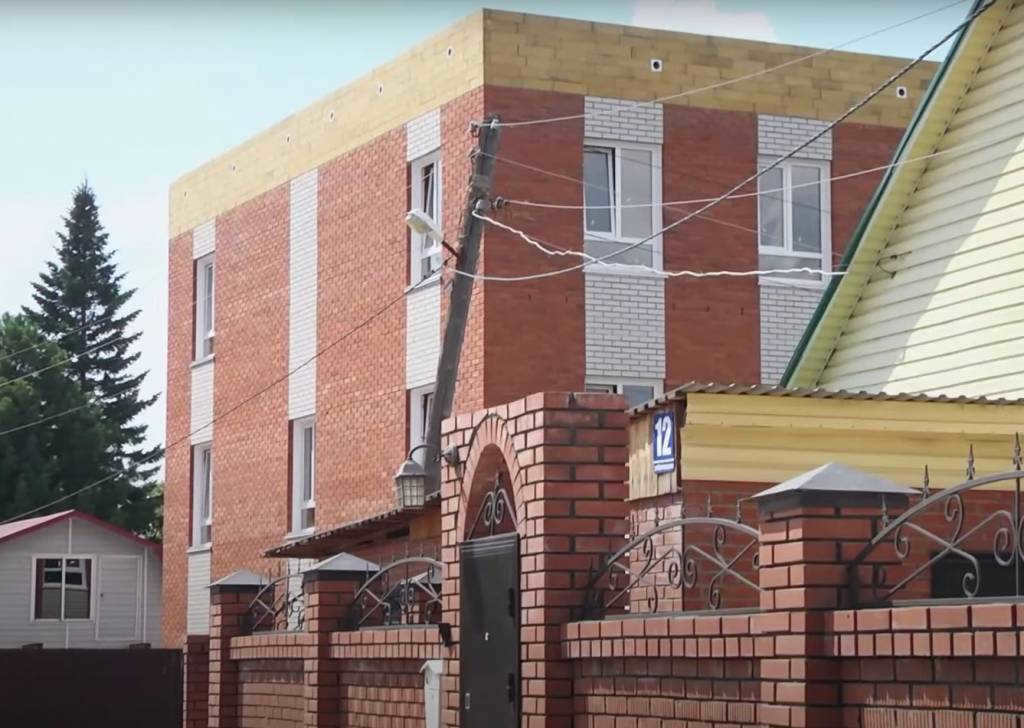

August 17, 2023 10:07 pm
A hostel for migrants under construction in Novosibirsk has been ordered to be demolished
The city’s self-building commission has made the decision to demolish a hostel for migrants that is currently being constructed in Novosibirsk’s Kirovsky district due to numerous violations.
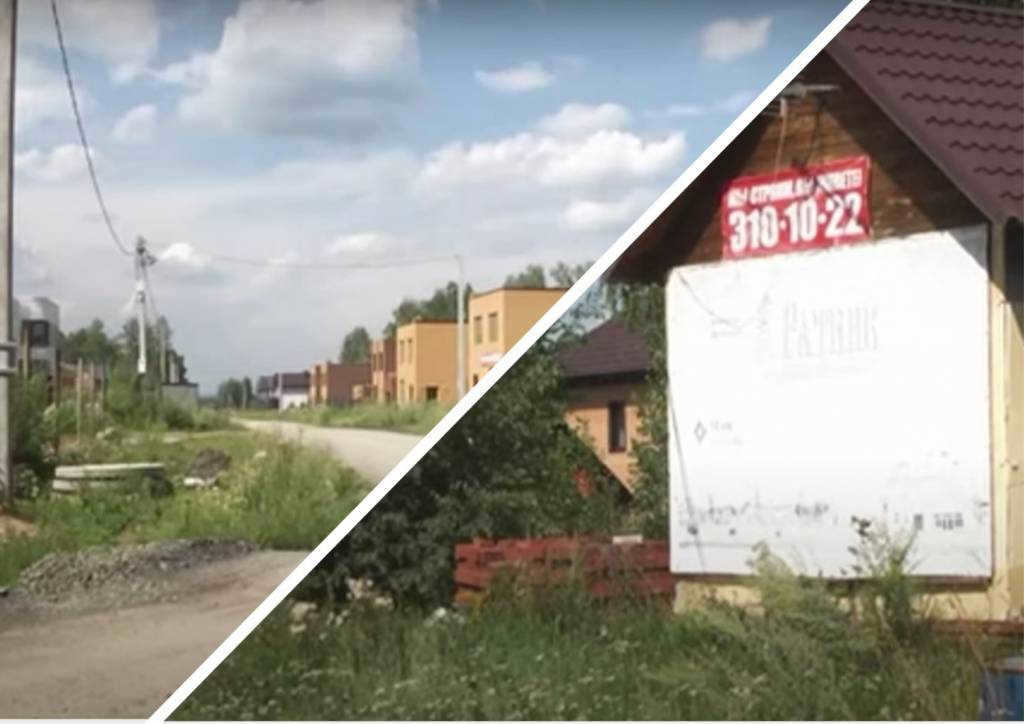

August 17, 2023 09:38
In Novosibirsk, a public servant has become a large landowner and is indebted to TSN
The authorities of the Novosibirsk region have been unable to find available land for the privileged for many years. However, some entrepreneurs who are members of the Public Council of the Land Department have become large landowners. This situation occurred in the TCN “Ratnik” where one of the founders turned out to own dozens of plots of land and owed a significant amount to the partnership.
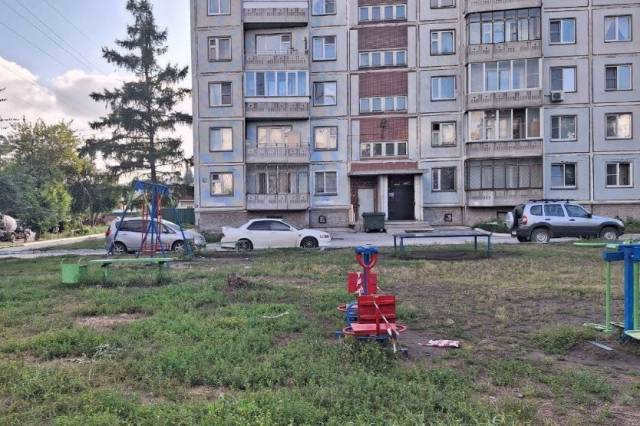

More information -> August 16, 2023 14:00
The prosecutor’s office in Novosibirsk is requesting the removal of playgrounds due to harmful radiation.
A controversy is unfolding in the Sovetsky district of Novosibirsk regarding the potential removal of playgrounds located in the courtyards of three residential buildings. According to the prosecutor’s office, these playgrounds are situated within the protective zone of a nearby substation and are exposed to hazardous levels of radiation.
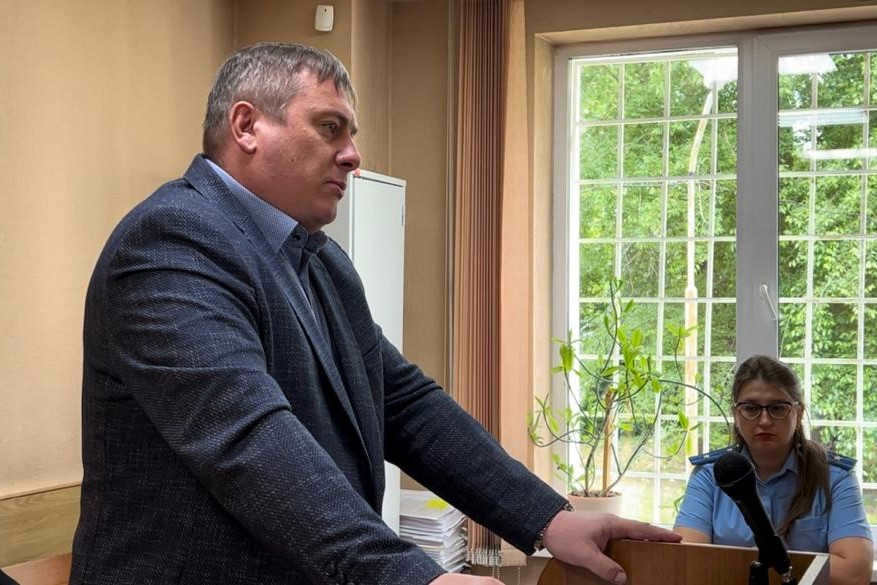

Read more-> August 16, 2023 10:24 pm
Deputy Popovtsev in Novosibirsk has been accused of causing 54 million dollars worth of damage to the Berdchanka garment factory.
As part of the bankruptcy proceedings of the sewing factory, shareholders of JSC ‘Berdchanka’ are continuing to file lawsuits against Gleb Popovtsev, a member of the Novosibirsk City Council who was the company’s head for a period of time and conducted a series of questionable transactions during that period.
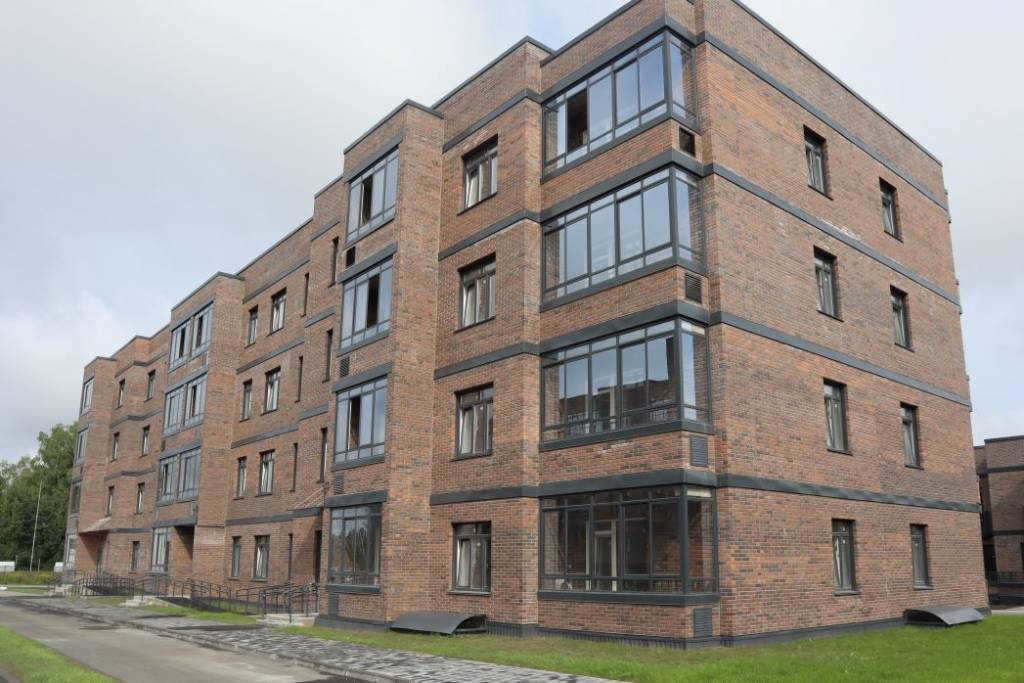

Learn more -> August 14, 2023 16:18
Shareholders of the DaVinci housing estate will not stage a protest: the residential complex’s houses have been handed over following the intervention of the Prosecutor’s Office.
The issue of delivering four completed houses in the DaVinci residential complex has been resolved after the Prosecutor’s Office stepped in. Earlier, the Novosibirsk district administration had denied the developer a permit for their commissioning.
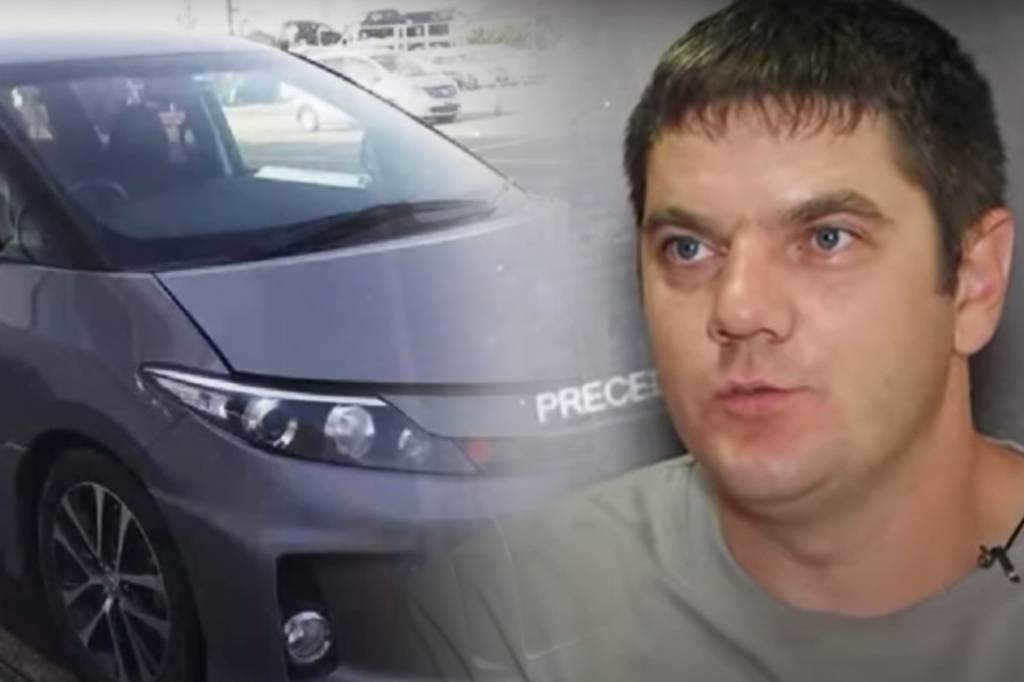

Read more-> August 10, 2023 18:43
A resident of Novosibirsk was swindled out of 2 million in a scam involving the purchase of a personalized car from Japan
Another resident of Novosibirsk has come forward as a victim of an automotive fraud. He, along with four other affected individuals from Siberia, entered into a contract with a company called “Autorotation-RS” based in Vladivostok. This company promised to buy and deliver cars from auctions in Japan. The clients transferred money to the company’s director’s bank card, but the cars were never delivered.
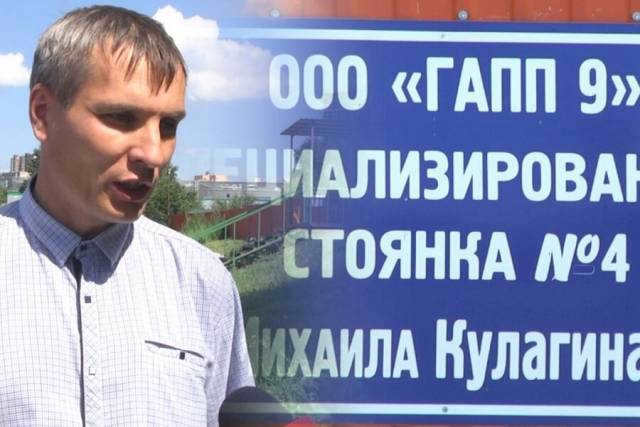

Read more-> 09 August 2023 13:20
The court in Novosibirsk has ruled that the requirement to pay for parking lot services ‘on the spot’ is illegal.
A public activist in Novosibirsk named Denis Dudin has successfully won a court case against a parking lot where he was forced to pay for immediate evacuation and storage services, even though according to the law, car owners have 30 days to do so. The court deemed the actions of the employees at LLC “GAPP-9” to be unlawful. However, it appears that the tow truck operators have no intention of changing their methods.
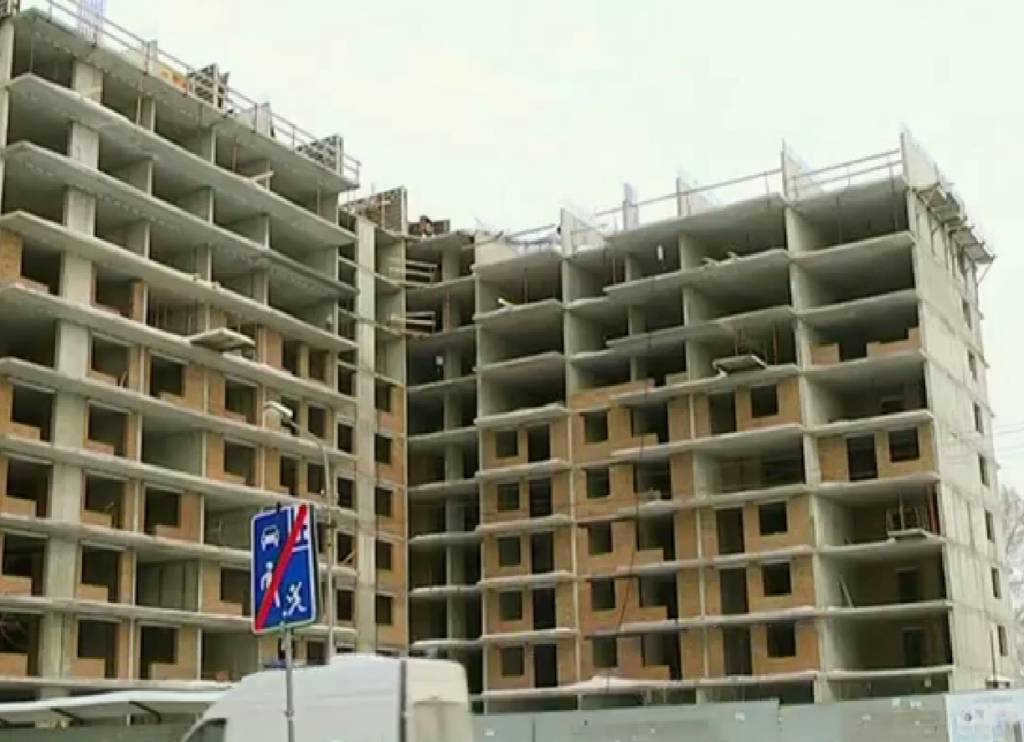

Read more-> 08 August 2023 14:55
The mayor’s office in Novosibirsk has granted permission for the completion of the house “irradiated” by the TV tower
A specialized commission of the mayor’s office in Novosibirsk has given the green light to OOO Stroy-Plus, the developer, to resume the construction of a high-rise building on Serafimovicha Street. The project had been put on hold several years ago due to the presence of a nearby TV tower that emitted radiation onto the upper floors of the building.
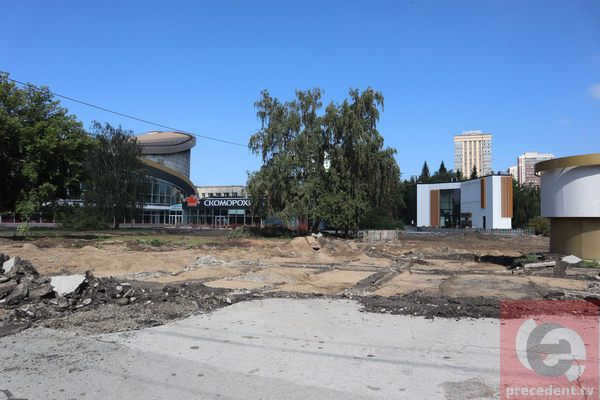

Read more-> 04 August 2023 14:21
Over 600 residents of Novosibirsk are urging the mayor to vacate the parking lots near the circus.
The ongoing renovation of the square near the circus is at risk of turning into a major scandal. The mayor’s office has received a petition signed by several hundred citizens of Novosibirsk, requesting that the parking lots on the square between Narymskiy Square and the Ascension Cathedral be left untouched.
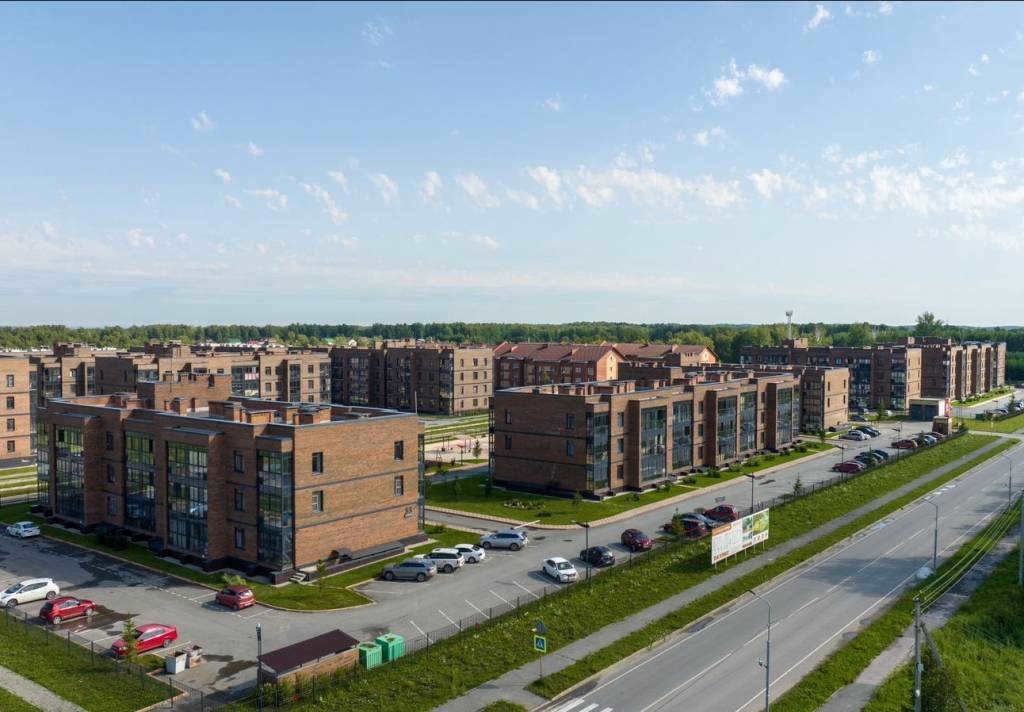
More information -> 04 August 2023 14:04
Novosibirsk faced an obstacle in the commissioning of 4 completed residential buildings: over 100 deceived shareholders are affected.
The authorities in Novosibirsk district have denied a permit to developer Akadem-Razvitie to commission 4 residential buildings in the village of Lozhok. The municipality cited water limit exhaustion as the reason for the denial. The construction company disagrees with the decision and plans to file an appeal with the prosecutor’s office.
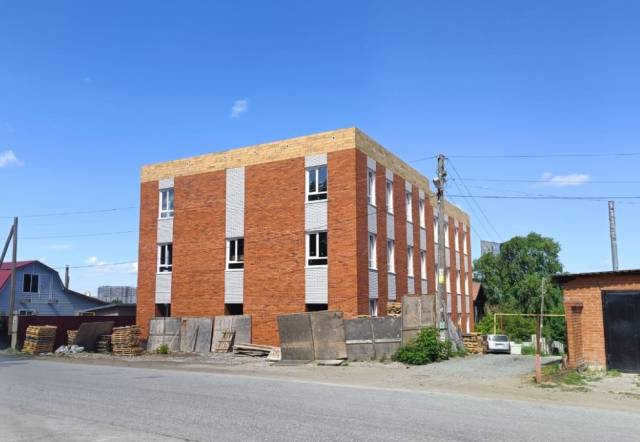
Read more-> July 27, 2023 19:11
Novosibirsk is rapidly constructing a 3-storey garden house on the left bank.
Construction of a three-storey permanent structure is ongoing in the Kirovsky district of Novosibirsk. There are plans to potentially convert the building into a hotel for migrants. However, numerous violations have been reported during the construction process.
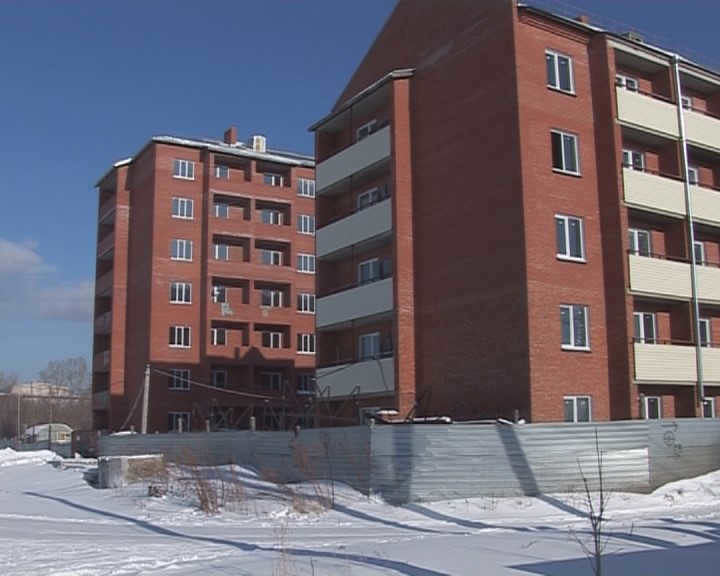
Read more-> 26 July 2023 14:31
Novosibirsk unable to revive 25-year-old construction project on left bank
The Novosibirsk Regional Arbitration Court has rejected the claim of the housing and construction cooperative Petukhova 6/6 to declare the refusal of the mayor’s office to terminate the lease agreement with the previous bankrupt developer of the problematic house with a 25-year history as illegal.
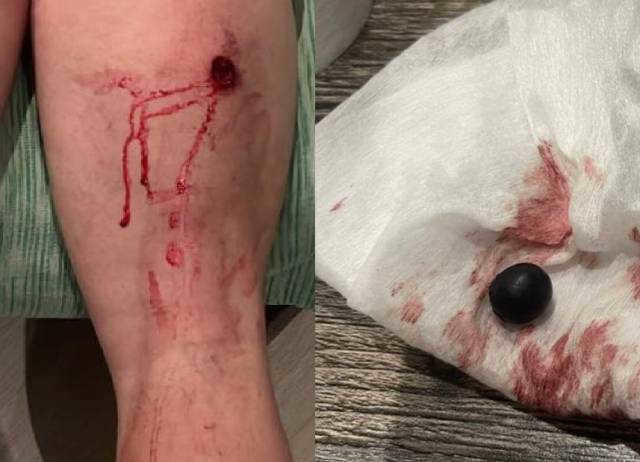

Read more -> July 25, 2023 13:58
“Let’s go to the forest, we’ll finish him off”: in Novosibirsk a case of assault has been initiated following a shooting incident
The Interior Ministry investigators in Novosibirsk are currently examining a case involving the abduction of an individual who was subjected to physical violence, weapon usage, and threats in order to extort money. However, law enforcement officials have currently categorized this incident as causing only minor injuries.
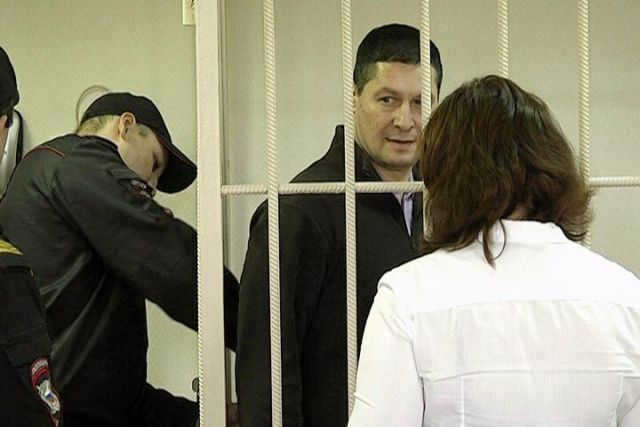
Learn more-> July 24, 2023 17:53
Novosibirsk lawyer-fraudster Sergei Pishchuk has been granted parole and is now out of prison
Sergei Pishchuk, a former lawyer, has been released from the general regime colony in Nizhny Tagil and has returned to the Novosibirsk region. He was granted parole due to his good behavior. Pishchuk, who was known for his fraudulent activities of illegally acquiring homes and apartments from his clients, is now facing trial.
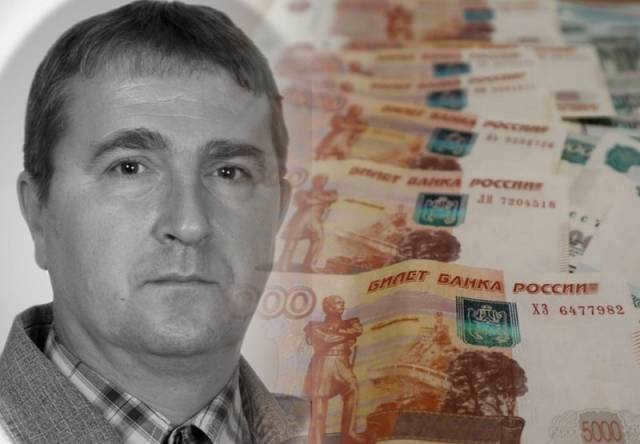

Learn more-> July 19, 2023 16:45
MTS Bank declines to provide any statement regarding the vanishing of 1.3 million rubles from the bank account of a deceased Novosibirsk resident.
MTS Bank declines to provide any statement regarding the vanishing of 1.3 million rubles from the bank account of a deceased Novosibirsk resident. The money mysteriously disappeared from the account of the individual residing in Siberia, and the family members of the account holder are unable to obtain any information from the bank regarding the activity of funds in the account.
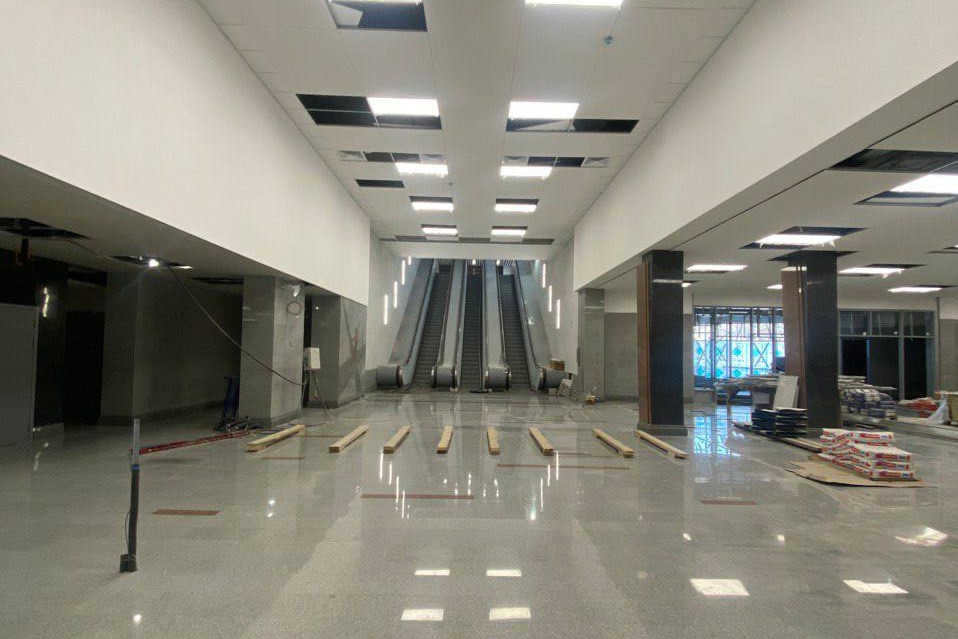
Read more-> July 19, 2023 10:29 pm
Novosibirsk Metro refutes claims of wrongdoing in the distribution of a $200 million loan for the completion of Sportivnaya.
The Novosibirsk Metro disagrees with the prosecutor’s office’s assertion that there were irregularities in the approval of a $200 million loan to SpetsTransStroy for the completion of the Sportivnaya station.

Read more-> July 18, 2023 16:16
“4 kilometers away from the bus stop”: the Sadovy settlement near Novosibirsk has been eagerly awaiting public transportation for over a decade
Sadovy village, located near Novosibirsk, was given land by the authorities over 10 years ago to construct residential houses for large families, but it still lacks access to public transportation. Residents have to trek over 4 kilometers to reach the nearest bus stop.
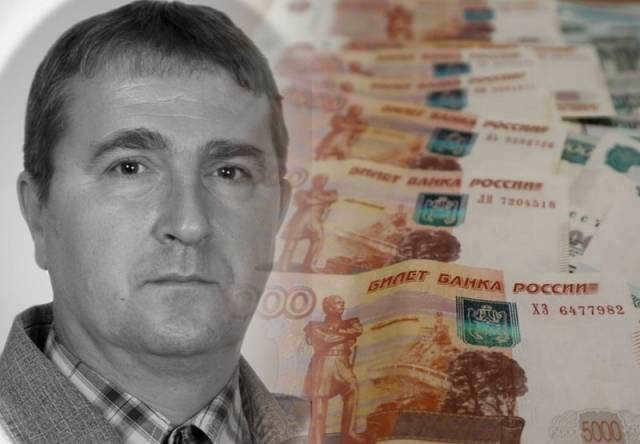

Read more-> July 16, 2023 17:48
After his death, a man’s bank account in Novosibirsk was robbed of 1.3 million rubles.
A deceased resident of Novosibirsk had 1.3 million rubles vanish from his bank account. The bank is not providing any information on where the substantial amount went, prompting the man’s heirs to take legal action against the bank.
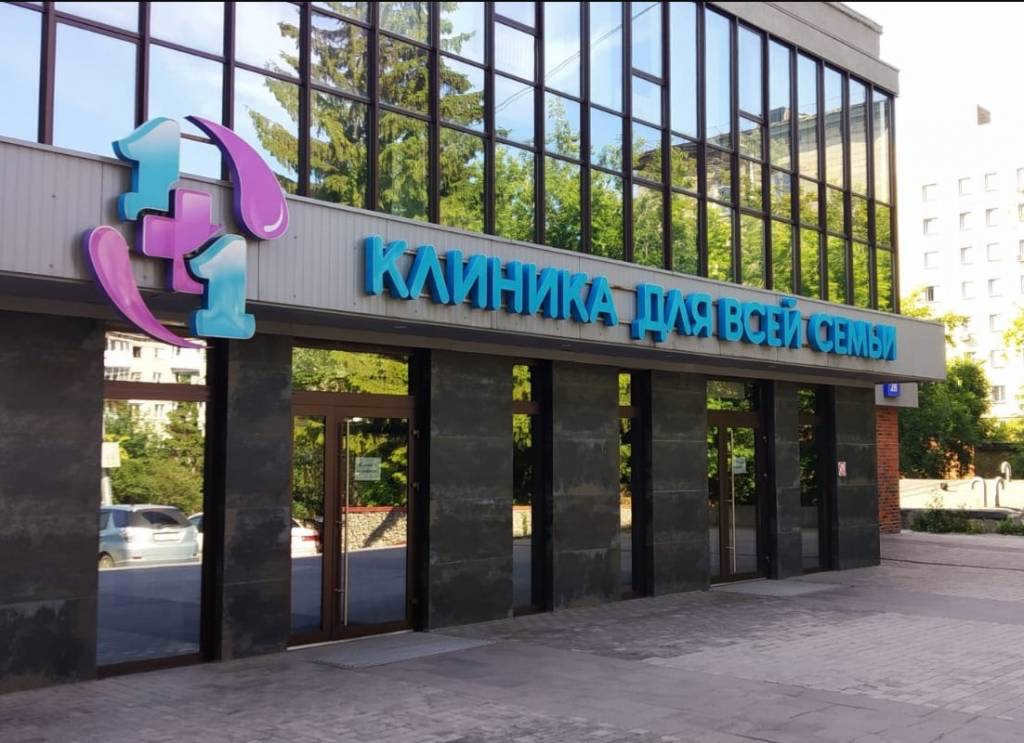

Read more-> July 13, 2023 16:36
Owner of Voskhod Building in Novosibirsk Speaks Out on “Clinic 1+1” Eviction Scandal
The owner of the building, where “Clinic 1+1” is being forcibly evicted by bailiffs, has provided a statement to the media. The Novosibirsk businessman has assured that he is not a foreign agent, contrary to previous reports, and that his actions in the conflict with the private hospital are strictly in compliance with the law.
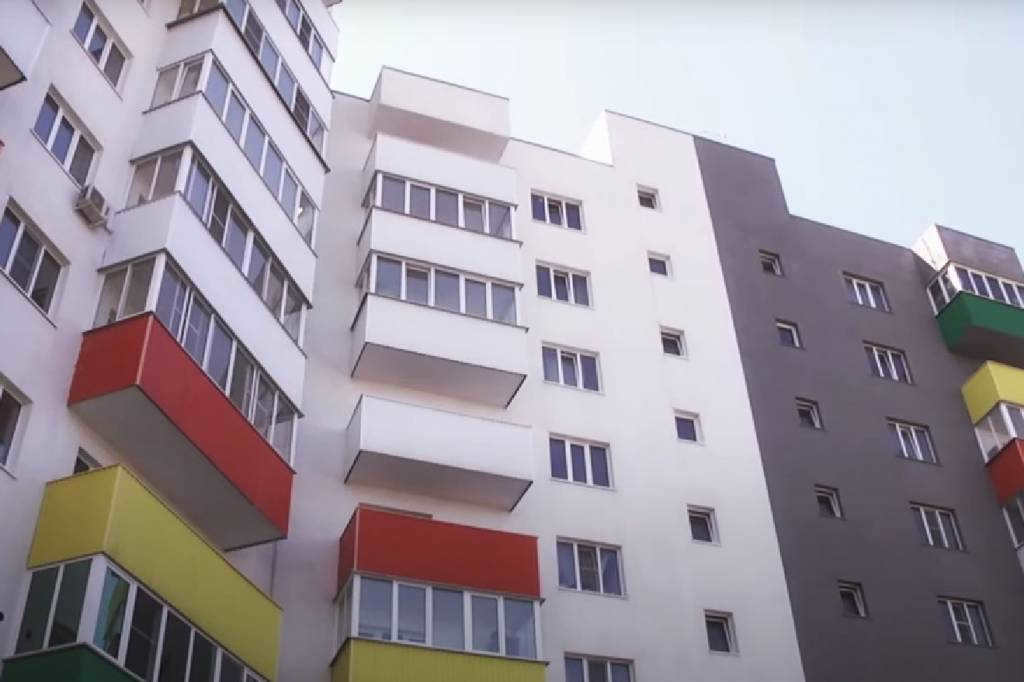
Find out more-> July 11, 2023 14:11
Battle for the house: 4 lawsuits filed in court after an attempt to change the management company in a high-rise building in the Oktyabrsky district
In June 2023, two apartment owners of the building at 8/1 Uzlovaya Street filed four lawsuits in the court of the Oktyabrsky district. This occurred following an attempt to replace the management company that has recently been responsible for the maintenance of the twelve-story building.
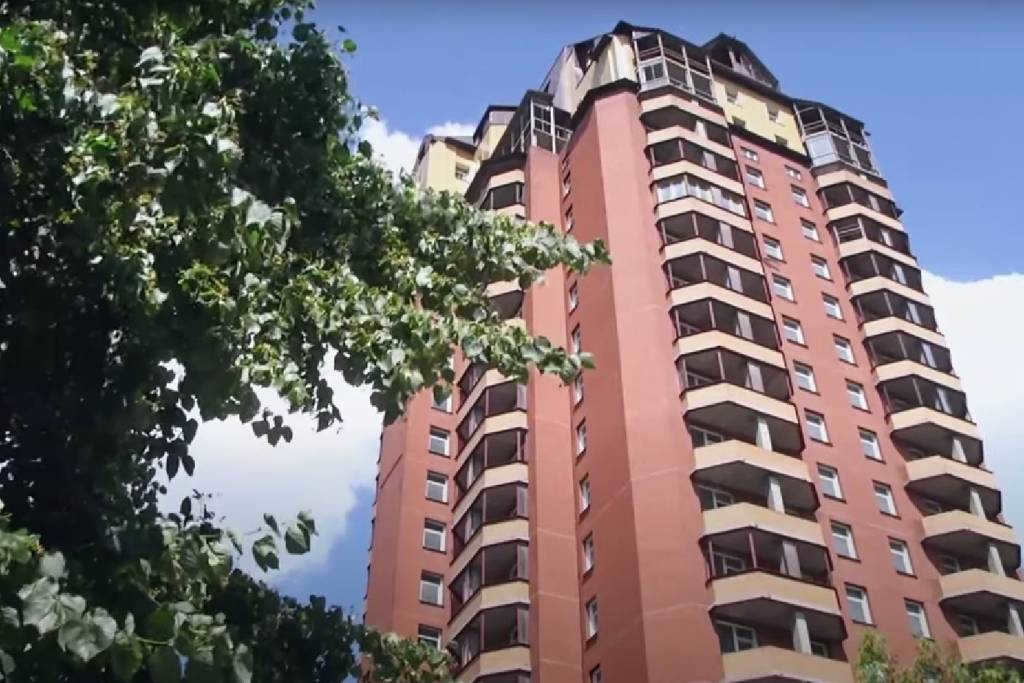

Learn more -> July 11, 2023 13:23
“Twenty-two years of waiting in other people’s apartments”: cheated shareholders of a long-term construction project on Kropotkina Street in Novosibirsk.
Last week, a demonstration took place in Novosibirsk protesting against the lack of progress in one of the city’s longest-running construction projects. Shareholders who invested in the construction of a residential building on Kropotkina Street 22 years ago gathered to express their frustration with the authorities’ lack of action.
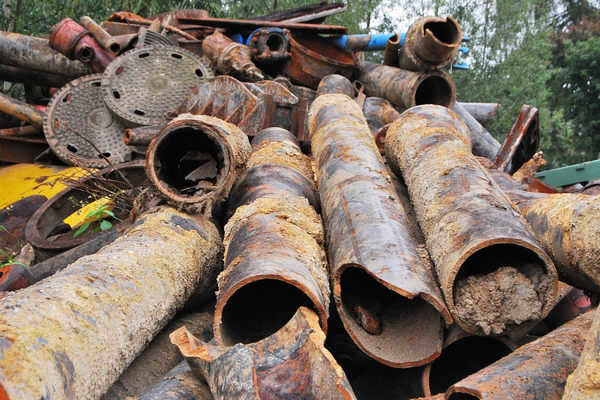
Read more-> 10 July 2023 16:19
The sewage dump in the Chulysky district of the Novosibirsk region went undetected in satellite imagery.
The first claim filed by Rosprirodnadzor regarding extensive soil pollution near Chulym has been reviewed by the Arbitration Court of the Novosibirsk Region. This time, the amount of the claim reached approximately 4 million rubles. According to the agency’s experts, the total environmental damage is estimated at 8 billion rubles.
Celebrating Cosmonautics Day 2021: The Holiday Date and Key Facts
Discover the year Yuri Gagarin embarked on his historic spaceflight, learn about the current astronauts currently in space, including the number of Russian cosmonauts. Explore the momentous occasion when the first human ventured into outer space and find out who holds the distinction of being the first female astronaut. Additionally, delve into the fascinating question of how many individuals have journeyed into the cosmos.
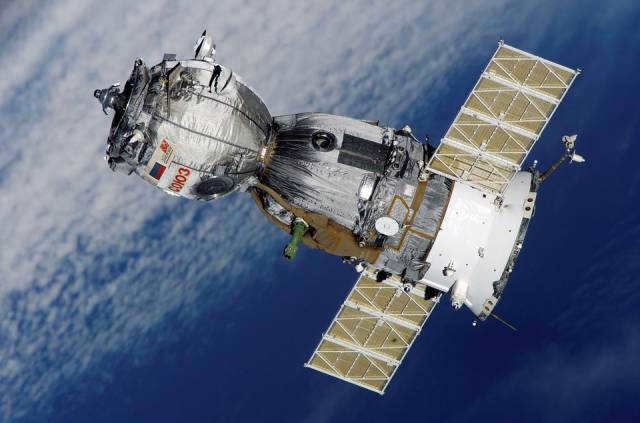
Back on April 12, 1961, the world witnessed a historic event when the first ever manned satellite spacecraft was launched into Earth’s orbit. This groundbreaking mission was carried out on board the Vostok 1 spacecraft, with none other than the legendary cosmonaut, Senior Lieutenant Yuri Gagarin, as its passenger. The momentous launch took place at 9.07 am from the Baikonur Cosmodrome. The mission lasted 108 minutes, during which Vostok 1 completed one full revolution around the planet.
The celebration of Astronautics Day and the International Day of Space Flight on April 12 is embraced by individuals of all ages who have a passion for space. This includes children and adults alike. The celebration acknowledges not only the accomplishments of astronauts, but also the contributions of engineers and developers of manned vehicles, scientific researchers, military personnel involved in space defense and reconnaissance programs, employees of aviation and rocket-building companies, as well as students, teachers, and graduates of universities specializing in aerospace technology and space exploration. In 2021, this holiday marks its 60th anniversary and will be observed on Sunday, April 12.
Valentina Tereshkova became the first woman to venture into space on June 16, 1963.
Alexei Leonov, a Soviet cosmonaut, made history by being the first person to conduct a spacewalk on March 18, 1965, during a mission aboard the Vostok-2 spacecraft.
As of April 2020, a total of 565 individuals from 40 different countries have had the opportunity to venture into space. This impressive figure of 565 people from 40 countries highlights the global reach of space exploration.
Furthermore, at the present moment, there are cosmonauts currently aboard the International Space Station, serving as vital crew members. They are actively contributing to the ongoing mission and research efforts conducted in space.
The current roster for the ISS Expedition 64/65 includes the following individuals:
Katya Rubens (USA)
Sergey Ryzhikov (Russia)
Sergey Kud-Sverchkov (Russia)
Shannon Volker (USA)
Victor Glover (USA)
Mike Hopkins (USA)
Soichi Nogguchi (Japan)
In addition to the current crew, on April 9, Oleg Novitsky, Petr Dubrov, and Sergey Korsakov are eagerly preparing to join the team on the station, further expanding the international collaboration in space.
For those interested, it is worth mentioning that in 2021 there will be a final essay in schools, and it is crucial to be aware of the date and topics to adequately prepare. Understanding the necessary literature for the essay is also essential for successful examination.
The movie “Challenge” is currently being filmed on the International Space Station. Accompanying the professional cosmonauts on the ISS are actress Yulia Peresild and director Klim Shipenko, who are scheduled to return to Earth on October 17. Typically, Russian cosmonauts have to wait nine to ten years for their turn to fly, but in this case, the actress and director only had to prepare for a few months. Alexander Khokhlov, a popularizer of cosmonautics, shares the story of how this opportunity came about.
A decade of getting ready
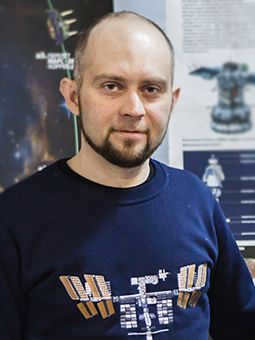
The year 2021 was set to be a remarkable year for Russian manned space exploration. It was planned that, for the first time in over two decades of the International Space Station mission program, only Russian cosmonauts would embark on Russian spacecraft, eliminating the presence of foreign astronauts aboard the Soyuz.
In the spring, a crew composed of commander Oleg Novitsky and flight engineers Pyotr Dubrov and Sergey Korsakov was assigned to the Soyuz MS-18 manned transport spacecraft.
Later in the fall, commander Anton Shkaplerov and flight engineers Andrei Babkin and Dmitry Petelin were scheduled to launch on the Soyuz MS-19.
In both instances, only the commanders possessed prior spaceflight experience, while all four flight engineers were newcomers. This exemplifies the training system within the Russian squadron of cosmonauts.
After successfully completing the selection process, young individuals who aspire to become cosmonauts undergo a comprehensive two-year training program that covers various aspects of space exploration. Once they pass the rigorous exams, they earn the prestigious certification as cosmonauts.
However, before embarking on a space mission, these certified cosmonauts undergo an additional five years of intensive training in collaborative groups. During this period, they focus on studying the Russian segment of the International Space Station (ISS) in great detail, including its maintenance and repair procedures.
Cosmonauts commence their preparations for the scientific program even during their group training. This allows them to complete their crew training within two years once they are assigned to a long expedition. During this time, they focus on mastering the specific operations and experiments that are planned for their six-month flight. Additionally, the cosmonauts undergo joint training to enhance their survival skills in challenging conditions that may occur during abnormal landings. They practice all possible scenarios in the Soyuz spacecraft, including launch, orbital flight, and landing. As part of their training, the crew traditionally visits ISS module simulators located in Europe, the United States, and occasionally Japan.
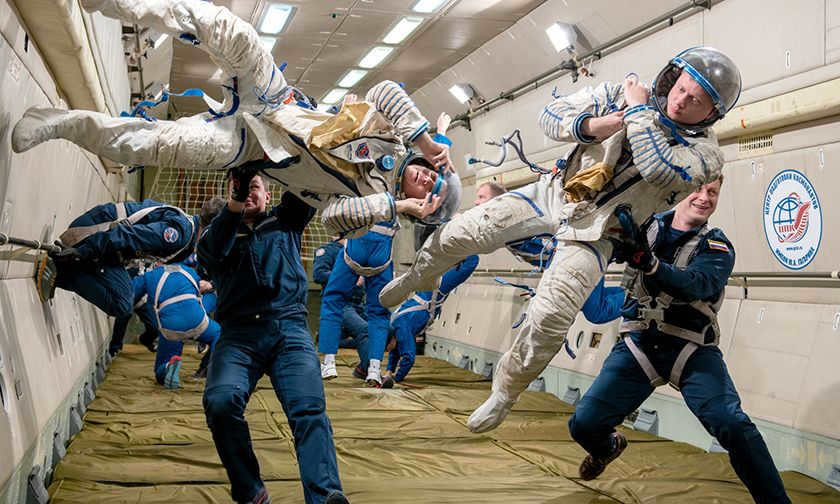
Surprisingly, the journey from the moment of competitive selection to the inaugural spaceflight of a cosmonaut typically spans a duration of nine to ten years. It is worth noting that the first space mission of a rookie cosmonaut is seen as a stepping stone – as one can truly become proficient in weightlessness only through hands-on experience in microgravity. Hence, in typical scenarios within the realm of Russian cosmonautics, a seasoned astronaut and a neophyte are dispatched into orbit together.
The lineup for the International Space Station (ISS)
Why does it take such a long time to wait for the first opportunity to experience space travel? Is it because it takes this long to prepare a professional for a journey into space?
No. This duration is actually due to the lineup in which cosmonauts wait for the eagerly anticipated launch from Baikonur Cosmodrome.
In comparison, six out of the eight astronauts from NASA’s 2013 cohort have already embarked on space missions, while America’s own spacecraft, after a significant hiatus, will only start transporting individuals to orbit in 2020.
Out of Russia’s 2012 cohort, only Pyotr Dubrov has ventured into space so far, taking off on April 9, 2020, aboard a Soyuz MS-18.
Why is this situation occurring? The Russian program for manned flights to the ISS often faces obstacles due to external factors. The occurrence of the US shuttle Columbia disaster in 2003 caused a delay in the scheduled flights of Russian cosmonauts, as American astronauts had to rely on Soyuz for transportation. Additionally, the influx of seven space tourists to the ISS during the 2000s further contributed to this delay. From 2017 to 2019, NASA astronauts were given five seats on the Soyuz as a means to offset the debt owed by RSC Energia (a part of Roscosmos State Corporation) to Boeing Corporation for the idle Sea Launch spaceport located near Vladivostok. Each of these circumstances directly impacts the fate of Russian cosmonauts, leading to an increase in their waiting period for a flight and a decrease in the number of flights they can undertake.
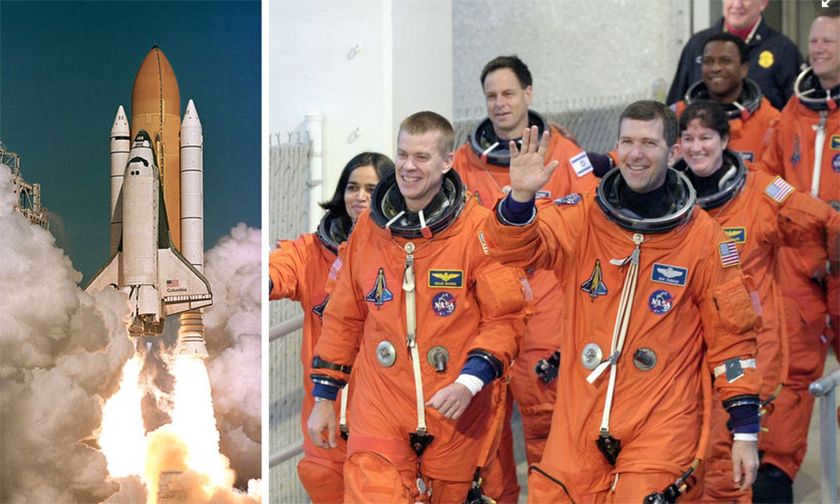
The launch of the Shuttle Columbia from Cape Canaveral and the crew of the shuttle before the launch on January 16, 2003 were captured in this photograph taken by Reuters / AP.
In 2021, a similar scenario unfolded. In May, a momentous event was on the horizon – the launch of the Nauka Multifunctional Laboratory Module, a long-awaited addition to the International Space Station (ISS). Russian crews were tasked with integrating the science module into the station, both internally and externally, necessitating numerous spacewalks in Orlan spacesuits. This ambitious endeavor would require 10-12 spacewalks, placing significant demands on both the crew and Mission Control Center specialists. It would have been logical to have a complete crew of three cosmonauts on the Russian segment to facilitate the installation of the new module, conduct station maintenance, and carry out scientific experiments.
However, by the end of 2020, the external circumstances began to shift once again.
During the spring of 2020, it was officially announced that two unexpected participants would be flying to the International Space Station (ISS) in October: Klim Shipenko, the director of the film “Challenge,” and Yulia Peresild, the lead actress. As a precaution, Alena Mordovina, an actress, and Alexei Dudin, a cameraman, were chosen as understudies in case of any unforeseen circumstances.
Out of the original group of six professional cosmonauts, three were left on Earth, patiently waiting for their next assignment.
A year-long journey in the skies
The Russian public and employees of the space industry had mixed reactions to the shooting of the feature film “Challenge” in space.
Let’s take a look at the positive and negative aspects of this unique endeavor, as we await the final results of the film crew’s work on the International Space Station (ISS).
The coverage of the project had some peculiarities. For instance, Dmitry Rogozin, the general producer of the movie “Challenge” and also the head of Roscosmos, mentioned that three thousand girls had applied for the casting. He even announced an additional female recruitment to the professional cosmonaut team. Invitations were extended to female participants of the casting call for this selection process, which was ultimately never announced.
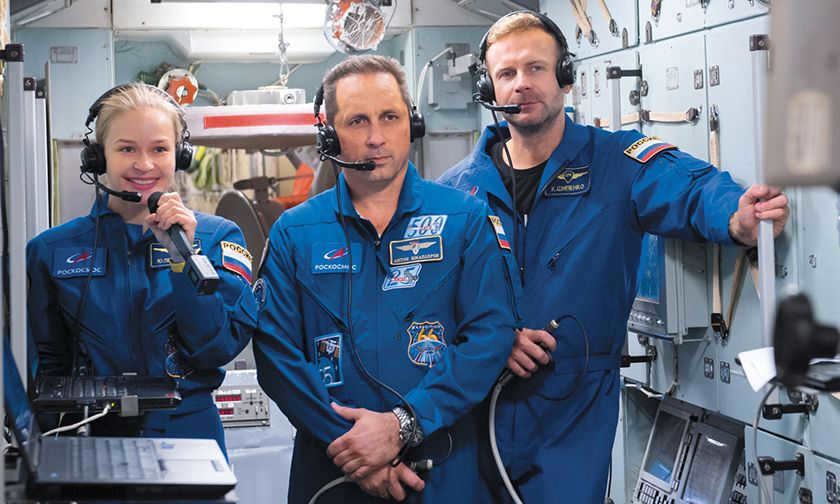

Participants of the Challenge project. Image: Roscosmos
It is quite surprising that Peter Dubrov and Mark Vande Hai’s one-year flight has taken an unexpected turn. Their spots in the Soyuz MS-18 spacecraft, scheduled for October 17, will now be occupied by Yulia Peresild and Klim Shipenko for the return journey to Earth. The ISS program has seen only a few long-duration flights, such as the well-known mission of Mikhail Kornienko and Scott Kelly, as well as the lesser-known flights of Christina Cook and Andrew Morgan. All of these extended missions were primarily driven by “production necessity,” just like the case of Petr Dubrov and Mark Vande Hai.
However, if Roscosmos had prior knowledge of Pyotr Dubrov’s one-year space mission starting in the fall of 2020, why wasn’t a special one-year medical science program prepared and announced, similar to Mikhail Kornienko’s flight? Given the media buzz surrounding the movie “Challenge,” it would have been fitting to highlight the bravery of professional cosmonauts. A year-long space mission is no small feat, and the organizers originally intended to “promote Russia’s space endeavors and honor the cosmonaut profession.”
Nonetheless, Yulia Peresild’s journey to the International Space Station could yield positive outcomes.
This is an unprecedented instance of a Russian individual embarking on a space voyage, having no inkling of it just a year prior.
Previously, all the private astronauts who had flown on Soyuz were foreigners, and the upcoming Soyuz MS-20 mission in December will also have non-Russian tourists on board: Japanese individuals Yusaku Maezawa and Yozo Hirano. This marks the first time during the ISS program that three Russians will be flying on the Soyuz. The inclusion of a Russian woman on the mission and the production of a film about it will be particularly significant for Russians, especially in comparison to the more frequent flights of American women on Russian spacecraft and the French-German movie “Proxima” directed by Alice Winokur and starring Eva Green, which explores the role of women in space.
This development will provide a Russian cultural context for women in space and private space initiatives, potentially leading to a shift in public perception of both manned space travel and women professionals in the space industry.





